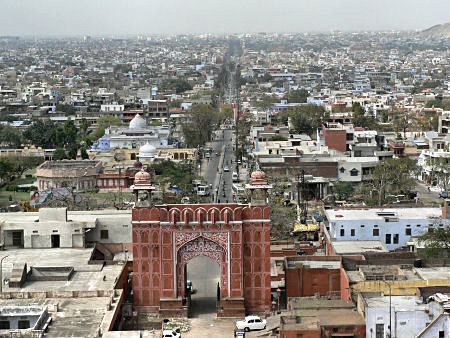

 |
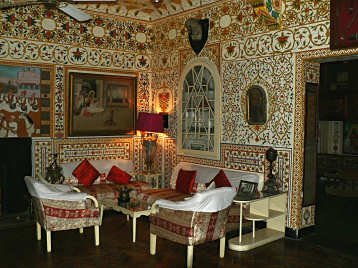 |
| Hotel Bissau Palace | Inside the hotel |
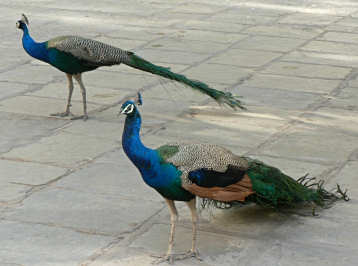 |
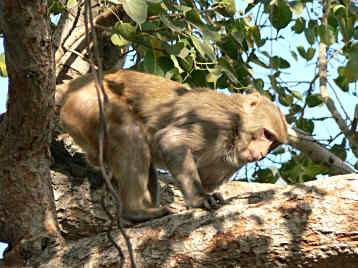 |
| Peafowl in the hotel garden | A visitor |
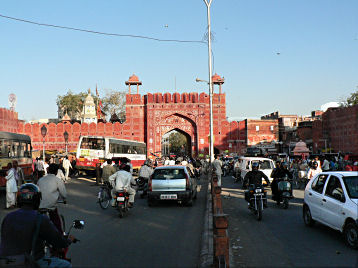 |
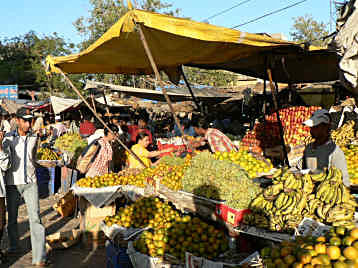 |
| Gate to the "Pink City" | Market |
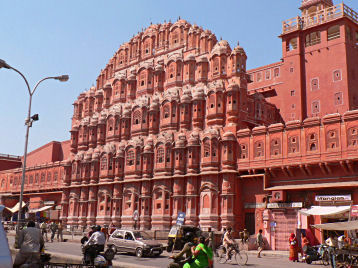 |
 |
| Hawa Mahal | Inside the Hawal Mahal (See the tourist?) |
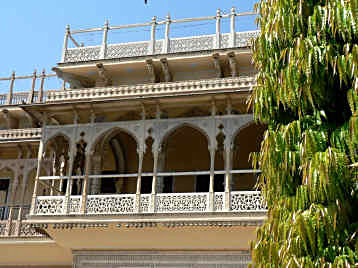 |
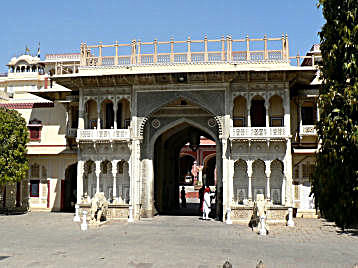 |
| Mubarak Mahal, or Welcome Palace | Courtyard gate |
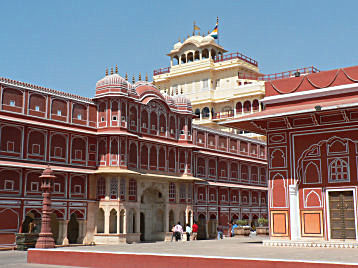 |
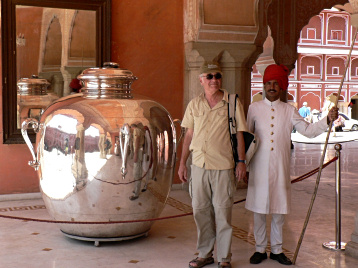 |
| City Palace seen from courtyard | Diwan-i-Khas, or Hall of Public Audience |
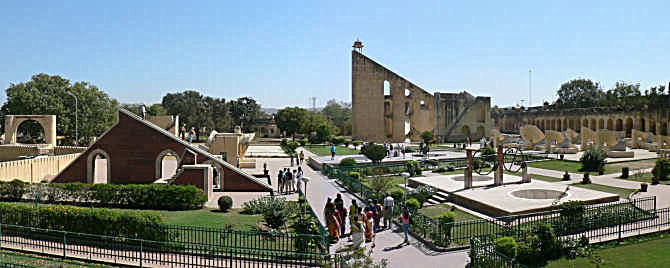 |
|
| View of Jantar Mantar | |
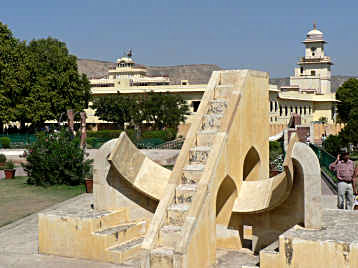 |
 |
| City Palace seen across a sundial | The great sundial |
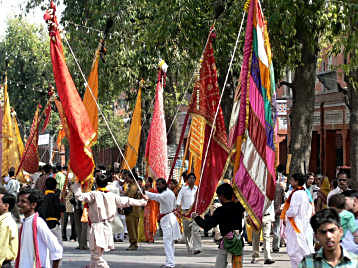 |
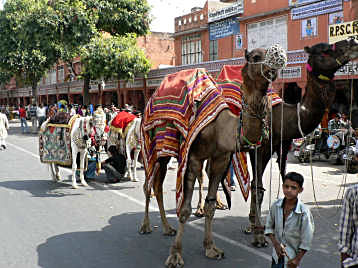 |
| Festive flags and dancers in this religious parade | Camels and horsed dressed in their finery |
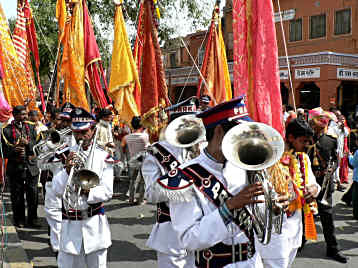 |
 |
| The music | Colorful saris |
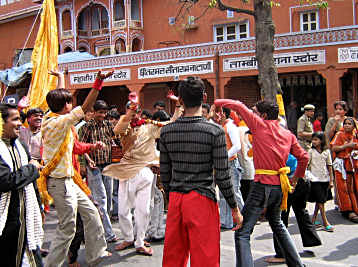 |
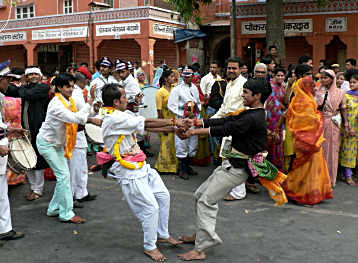 |
| Dancing and music go with Hindu religious ceremonies - wonderful! | More dancers and more joy |